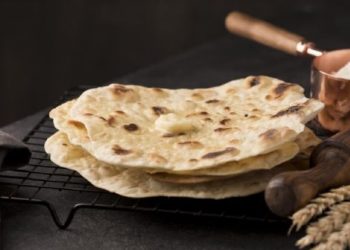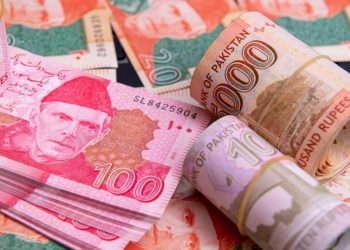Since time immemorial menstrual cramps have been the bane of existence of many women. Some of us have severe cramps whilst others have none, over time this changes. There are so many factors that effect menstrual cramping from age, diet, other medical conditions to daily activity. I am no medical expert but in my 18 years of menstrual cramping, I have noticed how the intensity of my cramps increases or decreases based on factors such as my diet, medication, exercise and stress. Menstrual cramps can become better or worse over time, there is no set standard for them. Where some women post birth experience less cramps, other experience no change at all. The aim of this post is to look at what causes menstrual cramps and how we can prevent menstrual cramps from becoming a hindrance during our time of the month.
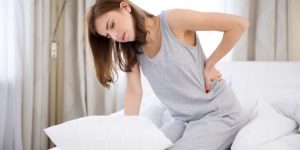
What causes menstrual cramps?
In order to expel the swollen uterine lining, prostaglandins cause contractions in our uterine muscles, which causes inflammation and pain. The higher the level of prostaglandins, the more sever menstrual cramps tend to be.
What are prostaglandins?
Prostaglandins are natural chemicals in the body that act like hormones. Their main function is association with promoting and resolving inflammation in the body. Prostaglandins are produced in the part of the body that they are needed.
A higher production of prostaglandins causes severe menstrual cramps in women as well as heavy bleeding. Research has shown how prostaglandins promote inflammation but has yet to determine how it resolves it.
Other causes of menstrual cramps.
Painful menstrual cramps are not limited to a higher level of prostaglandins, there are a few underlying conditions which can contribute to a painful menstrual cycle, these are:
- Endometriosis, where the uterine tissue becomes implanted outside the uterus;
- Adenomyosis, where the uterine tissue takes up growth on the muscular wall of the uterus;
- Uterine Fibroids, which are non cancerous growths that can cause pain;
- Pelvic Inflammatory Disease, where an sexually transmitted bacteria can cause infection; and
- Cervical Stenosis, where the cervical opening is so small that it causes pressure and pain in some women during their period.
The incidence of severe menstrual cramps increases in women who reached puberty early, are under the age of thirty, smoke regularly, have a family history of menstrual cramps, have irregular menstrual cycles or have heavy bleeding during their menstruation.
Symptoms
Different women experience different symptoms and these too can change overtime depending on various external factors. Menstrual cramps can start between 3-5 days before your period is due and can increase in intensity over time. The pain causes a throbbing sensation in the lower abdomen, back and thighs. It can last for the entire course of your menstrual cycle with the intensity decreasing over time.
Menstrual cycles are not limited to cramps as women also experience mild pressure on their cervical region, bloating, nausea, flatulence, vomiting, headache and loose stools. Women also experience a sharp drop in their appetite once their period begins.
Prevention
In order to reduce the intensity of pain during one’s menstrual cycle, the most important factor is diet. Women should take multi-vitamins in order to keep the vitamins and minerals in their body balanced. In my own personal experience, regularly drinking milk even one week before my period is due, my cramps reduce significantly. If you do not like milk, you can take calcium supplements that would also have the same effect. The recommended daily dosage for calcium in women is 1000 mg. Calcium is also present in almonds, sesame seeds, dairy products and leafy green vegetables.
Taking anti-inflammatory medication for menstrual cramps can also help reduce and in some cases wholly eliminate severe menstrual cramping. It is recommended to start taking an over the counter anti-inflammatory once symptoms begin and to continue it for up to three days. In order to avoid taking unnecessary medication I take an anti-inflammatory the minute bleeding starts as it takes the cramps an hour or so to set in.
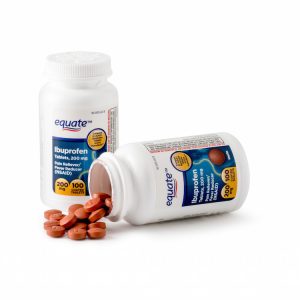
Doctors can also prescribe birth control to women that reduce the intensity of menstrual cramps. When taking birth control one must be vigilant and regular as one skipped dose can offset the entire cycle.
Regular exercise is a sure shot way of reducing menstrual cramping. Many women tend to avoid unnecessary movement on the first day of their period. Whilst there is discomfort, it is always better to walk it off then constantly sit. Whenever I feel that the intensity of my cramps is increasing and I am unable to rest it out properly, I have noticed that walking helps reduce the pain caused.
A hot water bottle or heating pads are essential for muscular pains. Menstrual cramping is no different. If the pain is not too intense, always opt for a heating pad to help relieve pain.
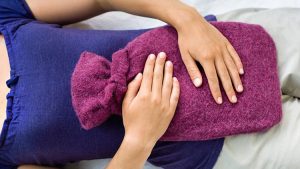
Supplements are a great way to ensuring that your body has a balanced supply of vitamins. When buying supplements to cater to menstrual cramping look for ones that have Vitamin B-1, B-6, Vitamin E, Potassium, Magnesium and Omega 3.
Research for alternative therapies has shown that a mixture of lavender, sage, almond and marjoram oil used to massage certain points on the abdomen and back also helps reduce menstrual cramps.
One should avoid fatty foods, salty foods, caffeine, alcohol and fizzy drinks during their period as they have been linked to bloating. If you fancy having a cuppa, opt for ginger or lemon tea or decaffeinated drinks. As for food opt for avocado, peanut butter, prunes, chickpea and bananas as they contain boron which helps in the reduction of period cramps and helps the body absorb phosphorus and calcium.
Make sure that you drink plenty of water during your period. Drinking more water helps the body retain less water that often is the cause for bloating. As odd as that sounds its actually true. Opt for chamomile, ginger, fennel, turmeric or cinnamon tea. Warmer liquids help increase blood flow under the skin which can reduce cramps.



